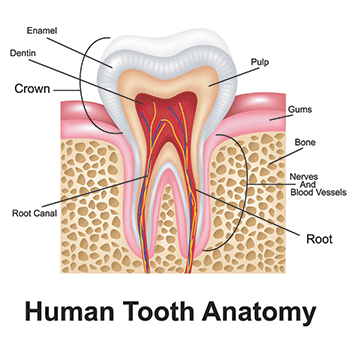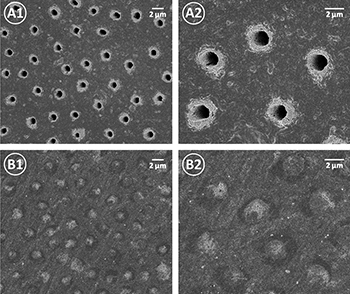New treatment could calm temperature-sensitive teeth
Sand-like grains and a green tea extract help plug holes that leave tooth nerves vulnerable

Ice cold water can taste delicious — unless you have sensitive teeth. Then it may hurt to consume anything very hot or very cold.
Srisakorn/iStockphoto
On a chilly winter day, there’s nothing better than a steaming hot chocolate — unless you have sensitive teeth. Then that yummy treat could give you a jolt of pain. Brushing your teeth or eating ice cream might feel just as horrible. Dentists can’t cure sensitive teeth, although treatments are available. However, they don’t last very long. But a new and possibly longer-lasting treatment is under development in China. Researchers there say it could repair the holes behind temperature-sensitive teeth. And a bonus: It might help prevent cavities, too.

Teeth have a cement-like outer layer called enamel. But this protective coat isn’t perfect. Acidic foods such as soft drinks can wear it down. Brushing too often with a stiff toothbrush also can damage it. As the enamel wears away, it can expose a sensitive inner layer called dentin. This layer contains many hollow channels called tubules that lead to nerves. Those nerves sense how things feel and relay their assessments to the brain.
A tooth’s enamel acts like a jacket on a cold day. While you’re wearing the jacket, standing outside doesn’t feel too bad. But unzip it and any cold wind can really sting. The same thing happens when nerves become exposed. Cold, heat, the pressure from stiff toothbrush bristles and other everyday sensations may now become really painful.
Dentists treat such teeth by clogging the open tubules. Often they use a mineral with a long name: nanohydroxyapatite (NAA-no-hy-DROX-ee-AA-puh-tyte). It mimics the natural structure of a tooth’s enamel. However, regular wear and tear can strip this mineral off of the teeth quickly. With the tubules again open, their temperature sensitivity returns. Open tubules also may leave a tooth more vulnerable to decay.
Great grains
Cui Huang and her team thought they might be able to solve both of these problems. Huang is a dental researcher at Wuhan University in China. First the researchers combined nanohydroxyapatite with a green tea extract. Other research has shown that the chemical from tea can help prevent cavities.
Next, Huang’s team put both ingredients inside nanoparticles made from a form of silica (SILL-uh-kuh). Silica is the mineral that makes up most beach sand. But sand grains vary widely in size and shape. That’s why these researchers turned to lab-made silica. Its particles have very uniform shape and size.
A silica nanoparticle is extremely tiny. But it can be ten times larger than a particle of nanohydroxyapatite. Huang hoped that the bits of silica would wedge tightly inside the tubules, making them hard to dislodge.
The product looked like “a kind of white powder,” says Huang. Her team tested it on slices of extracted wisdom teeth. Each slice had open tubules. The researchers covered the openings with a mixture of the powder and water. Then they used a toothbrush to brush over the clogged tubules for three minutes. They also exposed the surface to acid. The treated teeth stayed sealed.

The researchers described their results last year in ACS Applied Materials & Interfaces.
Joana Cunha-Cruz finds the new data promising. A dental researcher, she works in Seattle at the University of Washington School of Dentistry. She wasn’t involved in this study. But she has studied tooth sensitivity and knows how common it is. According to her research, one in eight adults experience this kind of pain. “I think it’s great that there are new products being developed,” she says. “Dentists aren’t happy with the treatments that are available now.”
Still, Cunha-Cruz says it’s too early to know if green tea and silica are the answer. She stresses that in this study, “the subjects are not people. They are extracted teeth.”
Huang realizes that her group still has much work to do. Her team is now testing its treatment on animals. Then they plan to try it in people. If it works, this powdery product might one day become an ingredient in your toothpaste.







